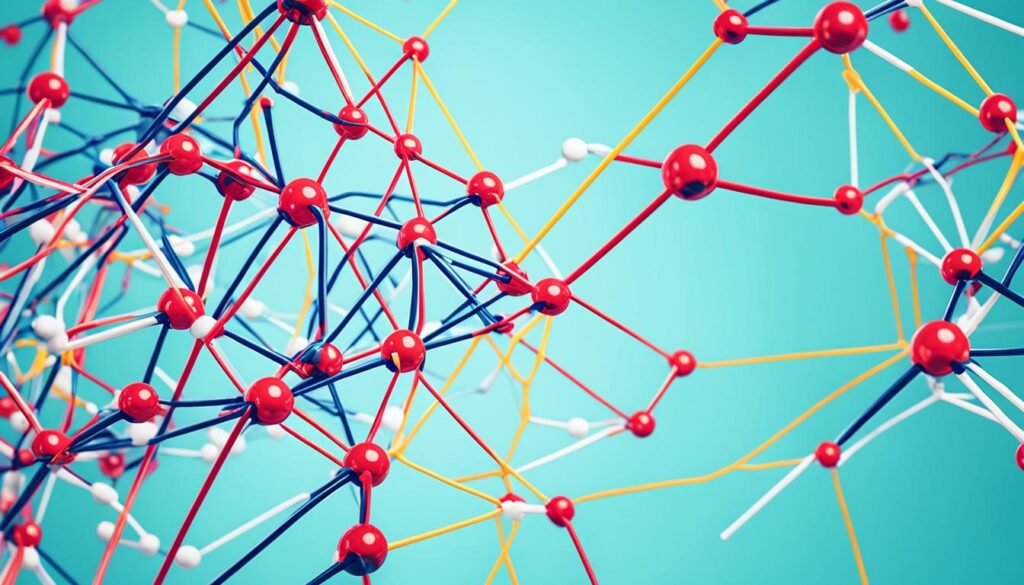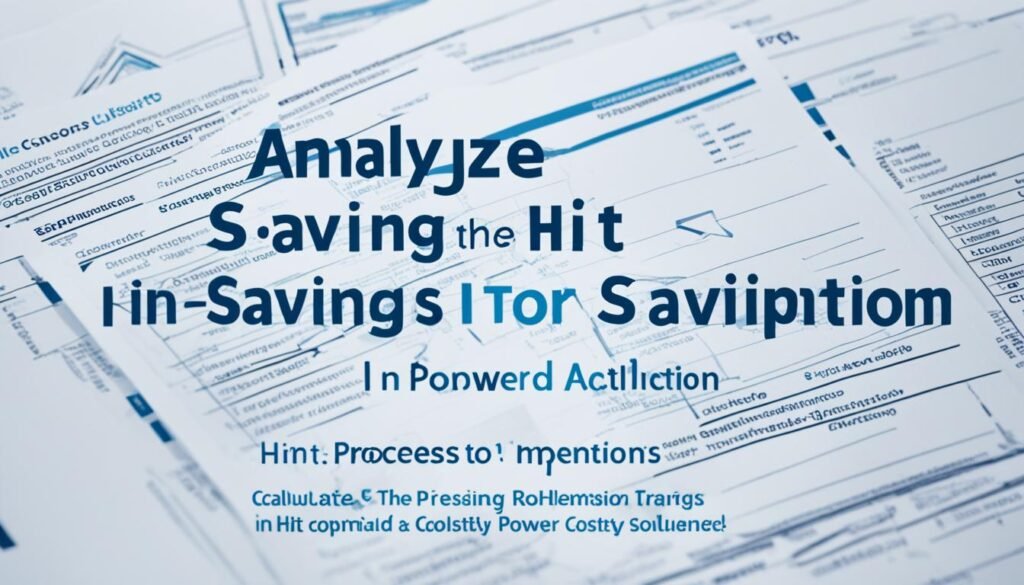Health information technology (HIT) is about using electronic systems for healthcare. These systems help healthcare workers and patients manage health info. They include things like electronic health records (EHRs), personal health records (PHRs), and tools for safe sharing of health data.
Many people use HIT, from patients to doctors and even companies. It’s changing healthcare for the better. It makes healthcare more accountable, improves patient care, and makes things run smoother. Plus, it can cut costs by making things safer and more efficient.
Key Takeaways
- Health information technology (HIT) encompasses the electronic systems used to manage and share healthcare data.
- HIT includes electronic health records (EHRs), personal health records (PHRs), and e-prescribing tools.
- HIT users range from patients to healthcare providers, researchers, insurance companies, and government agencies.
- HIT is transforming healthcare by improving accountability, patient outcomes, and operational efficiency.
- HIT can help reduce healthcare costs through improved safety, coordination, and chronic disease management.
Definition and Introduction to Health Information Technology
Health information technology (HIT) is key to modern healthcare. It includes electronic systems, hardware, and software for managing and sharing healthcare data. HIT makes it easy to input, store, send, get, and analyze health information in healthcare.
Many people use HIT, like patients, doctors, researchers, insurers, government agencies, and pharmaceutical companies. They use digital health data for their work. This helps them give personalized care, make public health policies, and do research on new medicines.
The Backbone of Healthcare
HIT is crucial for healthcare, supporting many important tasks, such as:
- Electronic health records (EHRs) to keep patient data together
- Telemedicine platforms for seeing patients from afar
- Predictive analytics to spot patients at high risk and track health trends
- Inventory management systems to make sure there are enough medical supplies
- Billing and claims processing to make getting paid easier
With digital technologies, HIT is changing healthcare for the better. It makes healthcare more efficient, improves patient care, and helps with making better decisions in the industry.
The healthcare world is always changing. The role of health information technology and its users will keep growing. They will shape the future of patient care and healthcare overall.
Issues of Concern with Health Information Technology
Health information technology (HIT) brings many benefits but also has challenges and concerns. These include high costs, data security risks, and the chance of new medical errors. These issues need to be tackled.
One big concern is the cost of getting and keeping electronic medical record (EMR) systems running. These systems are expensive upfront, especially for small healthcare providers. Over time, the costs for upkeep and updates add up.
Another issue is the risk of data breaches and security problems. With more healthcare data online, the chance of cyber attacks goes up. Keeping patient info safe is key, but it takes a lot of effort and resources.
| HIT Challenge | Description |
|---|---|
| High Implementation Costs | The substantial financial investment required to implement and maintain EMR systems and associated infrastructure can be a barrier, especially for smaller healthcare providers. |
| Data Security Risks | The increased digitization of healthcare data exposes it to potential cyber threats, necessitating robust security measures to protect sensitive patient information. |
| Productivity Impacts | The transition to HIT systems can initially disrupt workflow and productivity, as healthcare providers adapt to new technology and processes. |
| New Types of Medical Errors | The introduction of technology can lead to the emergence of new types of medical errors, which must be identified and addressed to ensure patient safety. |
Switching to HIT can also make things less efficient at first. Healthcare workers need to get used to new tech and ways of working. This can slow things down and affect how many patients they can see.
Finally, new tech can bring new kinds of mistakes. These mistakes need to be found and fixed to keep patients safe. Keeping an eye on things and always looking for ways to improve is key.
“Effective implementation of health information technology requires a careful balance between the benefits and the HIT challenges that must be addressed.”
Goals of Health Information Technology

Health Information Technology (HIT) brings many benefits to the healthcare field. It aims to make healthcare better in three main ways. These goals are to improve accountability, make patient health better, and make healthcare more efficient and less costly.
Improving Accountability
HIT uses real-time data to keep a close eye on important health metrics. This makes healthcare more accountable and transparent. By using technology, healthcare providers can make smarter decisions, track patient progress, and find ways to get better results.
Enhancing Patient and Population Health Outcomes
Tools like computerized physician order entry (CPOE) systems reduce mistakes with medicines and make patients safer. HIT also helps find diseases early and keep track of population health. This leads to better health outcomes and smarter interventions.
Increasing Healthcare Delivery Efficiency and Cost Reduction
HIT makes it easier for healthcare providers to work together by sharing data easily. This leads to cost savings and better health care through improved safety and disease management.
The main goals of HIT are to make healthcare more responsible, focused on patients, and cost-effective. As more healthcare providers use HIT, it’s clear that it can change the industry for the better. It can improve health for people and communities.
Increased Accountability with Health Information Technology

Health Information Technology (HIT) has changed healthcare by making it easier to monitor and analyze data in real-time. This leads to better planning for staff, handling emergencies, and running hospitals smoothly. By using HIT, healthcare leaders can make smart decisions based on facts.
The NEDOCS score is a key tool for measuring how crowded emergency departments are. It helps leaders decide how to use resources and move patients through the hospital. This makes sure patients get the care they need quickly and efficiently.
HIT also makes healthcare more accountable by automating reports and tracking performance. It sorts and presents data to spot problems, track progress, and see how changes affect things. This helps healthcare groups make better, more transparent decisions.
| HIT Capability | Benefit |
|---|---|
| HIT data monitoring | Real-time monitoring of critical metrics like ED overcrowding |
| HIT data insights | Improved visibility and actionable intelligence for data-driven decisions |
| HIT accountability | Enhanced transparency and performance tracking for greater accountability |
Using HIT, healthcare groups can improve accountability, patient care, and the quality of services. This leads to better health outcomes for everyone.
“The digitization of healthcare data has revolutionized the way we approach accountability, enabling real-time monitoring, reporting, and data-driven decision making.”
Improved Patient and Population Health Outcomes

Health information technology (HIT) is key to making patients safer and keeping populations healthy. Computerized physician order entry (CPOE) systems are a big help. They check for possible errors when doctors order medicines. This cuts down on mistakes with drugs and makes patients better off.
HIT also helps track diseases early and keep an eye on health trends. By using electronic medical records and maps, health experts can spot health problems fast. For example, they caught the lead poisoning in Flint, Michigan, early. This quick action helps keep communities safe.
Improving Patient Safety with CPOE
- Reduces medication errors through real-time alerts and decision support
- Enhances patient safety by catching potential drug interactions or dosage issues
- Leads to improved patient outcomes and reduced adverse drug events
Monitoring Population Health with HIT
- Leverages electronic health data to identify disease trends and outbreaks
- Applies geospatial analysis to pinpoint the origin and spread of health issues
- Enables early intervention and proactive public health responses
“HIT has become an indispensable tool for improving patient safety and population health. The insights it provides are transforming how we deliver and monitor healthcare.”
Health Information Technology for Better Healthcare Delivery

Health information technology (HIT) can change healthcare for the better. It makes sharing information between providers easier. This means faster access to patient info, better teamwork, and more efficient care.
Streamlining Care Coordination with HIT
HIT makes sharing data between healthcare groups smooth. Projects like the Fast Healthcare Interoperability Resources (FHIR) work on making this sharing better. They help with HIT data sharing and improve HIT healthcare delivery.
With better HIT care coordination, doctors can see a patient’s full medical history. They can track treatment and talk with other doctors. This leads to smarter decisions, fewer tests, and better patient results.
“HIT has the potential to transform healthcare delivery by breaking down silos and fostering better collaboration between providers.”
The healthcare world is going digital, and HIT is key to making care better. It helps make care more efficient and coordinated. This helps both patients and healthcare workers.
Cost Reduction Benefits of Health Information Technology

Health Information Technology (HIT) can greatly lower healthcare costs in many ways. It makes things run smoother, keeps patients safer, and helps manage chronic conditions. All these lead to big cost savings.
A 2005 study by the RAND Corporation found that better operations could save $77 billion a year in the U.S. By cutting down on paperwork and making workflows more efficient, HIT boosts HIT efficiency. This leads to lower costs overall.
Improved Safety and Chronic Disease Management
Tools like computerized physician order entry (CPOE) systems cut down on medicine mistakes and make things safer. This is good for patients and saves money by avoiding bad outcomes. Also, using HIT for chronic disease management means better tracking, early action, and more effective treatments. This can cut down on healthcare costs over time.
- Improved operations could save $77 billion a year
- CPOE systems reduce medicine mistakes and keep patients safe
- HIT for chronic disease management leads to better care and lower costs
“The savings from improved operational efficiencies alone could amount to $77 billion annually in the United States.”
By using HIT, healthcare groups can save a lot of money. They do this through better efficiency, safety, and managing chronic conditions. These changes can greatly improve healthcare for everyone, making it more affordable and sustainable.
Implementation Challenges of Health Information Technology

Health information technology (HIT) aims to change healthcare for the better. Yet, it’s hard to get everyone on board. The big issue is the high cost to start using it. Things like buying electronic medical record (EMR) systems and upgrading infrastructure are expensive.
These costs can be too much for small healthcare groups. The high costs of HIT EMR systems and HIT infrastructure upgrades are a big obstacle. Adding to this, the time it takes to adjust can make things worse, making it hard for providers to see the value in HIT.
Addressing the Implementation Challenges
To beat these HIT implementation challenges, healthcare groups need a solid plan. They should look into government incentives and see if they can share costs with vendors. It’s also wise to start with the most important parts of HIT step by step.
| HIT Implementation Factor | Average Cost |
|---|---|
| EMR System Purchase and Deployment | $15,000 – $70,000 per provider |
| Infrastructure Upgrades (hardware, software, IT support) | $3,000 – $10,000 per provider |
| Workflow Changes and Staff Training | $3,000 – $15,000 per provider |
By tackling the HIT implementation challenges and reducing the HIT EMR costs and HIT infrastructure costs, healthcare groups can make the most of health information technology. This leads to better patient care, more efficiency, and lower costs.
Health Information Technology Risks and Unintended Consequences

Health information technology (HIT) brings many benefits but also new risks. The move to digital healthcare data raises big concerns about HIT data security. With more access to patient info, the chance of data breaches and cyberattacks goes up.
Also, HIT productivity can drop. Clinicians often find it takes longer to use an electronic medical record (EMR) than paper records. This can lead to more frustration and burnout among healthcare workers.
Worst of all, HIT medical errors can happen. These errors come from too many alerts or unclear clinical decision support tools. They can put patient safety at risk and make HIT less effective.
Mitigating HIT Risks
To tackle these issues, healthcare groups need to invest in strong HIT data security steps. This includes encryption, access controls, and plans for handling incidents. Making HIT systems easy to use and focused on users can also cut down on productivity issues and error risks.
By tackling the risks and side effects of HIT early, healthcare providers can make the most of these technologies. They can keep patients safe and ensure the care quality stays high.
“The digitization of healthcare data has heightened concerns around HIT data security, as the increased accessibility of sensitive patient information heightens the risk of data breaches and cyberattacks.”
Health Information Technology for Consumers

Health information technology (HIT) is changing healthcare and helping consumers take charge of their health. Tools like personal health records (PHRs) and mobile health apps make it easier for patients to manage their health. These tools help patients get involved in their care and make better health choices.
Personal Health Records (PHRs)
PHRs let patients keep track of their health info, like medical history and test results. This gives them control over their health data. With PHRs, patients can watch their health closely, talk better with doctors, and make smarter health choices.
Mobile Health Apps
Smartphones have made mobile health apps very popular. These apps help users track health, log workouts, and manage health conditions. They also connect people with others who have similar health issues. This helps users monitor their health and get support from others.
Online communities are key to patient engagement in health tech. They let patients share stories, ask questions, and get support. These communities are great for sharing health knowledge and feeling supported, which is good for health records and overall well-being.
Tools like mobile health apps and online communities are giving people control over health info. This is a big step towards more active, team-based, and empowered health care for consumers.
Conclusion
Health information technology (HIT) is changing healthcare for the better. It brings new ways to make healthcare more accountable, improve patient care, and make things more efficient. This digital change helps everyone involved in healthcare work better together.
Even though HIT can be expensive and has security risks, the good things it does are much more important. Tools like computerized doctor orders and data analysis are cutting down on mistakes and helping manage diseases better. This leads to better health for patients and whole communities.
As HIT keeps getting better, we’ll see more people involved in their health care. With things like personal health records and mobile apps, patients will have more control over their health. This means they can make better choices, manage their health better, and work closer with their doctors. It’s a big step towards a healthcare system that uses technology fully.
FAQs
Q: What is health information technology (HIT)?
A: Health information technology (HIT) involves the management of healthcare information utilizing computer systems and electronic health records to improve healthcare quality and efficiency.
Q: Why is health information technology important in healthcare?
A: Health information technology is crucial in healthcare for enhancing patient care, reducing medical errors, improving coordination among healthcare providers, and enabling better access to patient information.
Q: What is the difference between health information management and health informatics?
A: Health information management focuses on the organization and security of patient data, while health informatics involves the use of technology and data analysis to improve healthcare outcomes.
Q: What career opportunities are available with a degree in health information technology?
A: With a degree in health information technology, individuals can pursue careers as health information technicians, medical coders, health informatics specialists, and healthcare IT professionals.
Q: How can someone start a career in health information technology?
A: To start a career in health information technology, individuals can enroll in a health information technology program at a college or university to acquire the necessary knowledge and skills for the field.
Q: Is accreditation important for health information technology programs?
A: Yes, accreditation is essential for health information technology programs as it ensures that the program meets established quality standards and prepares students for careers in the field.
Q: What is the role of registered health information technicians in healthcare?
A: Registered health information technicians are responsible for managing and organizing patient health information data, ensuring its accuracy, accessibility, and security within healthcare settings.




